Tone units The word ‘pragmatics’ applied to intonation,

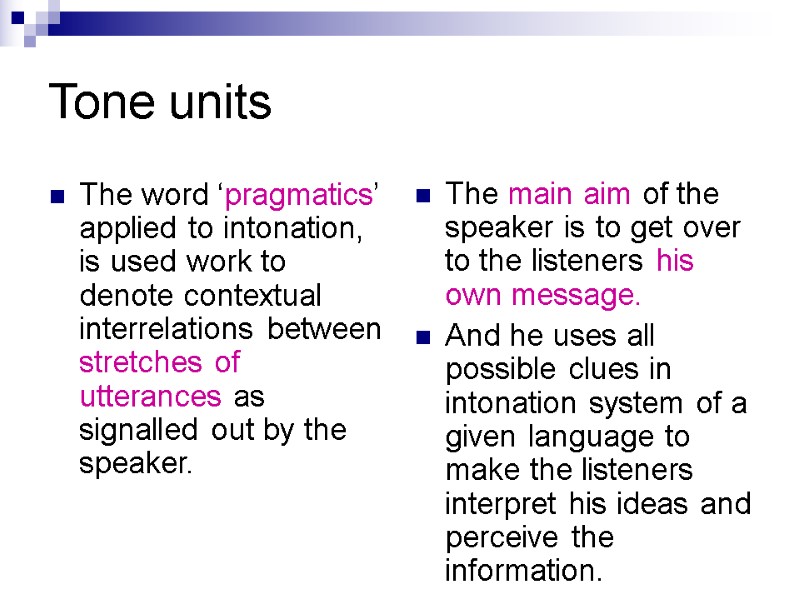
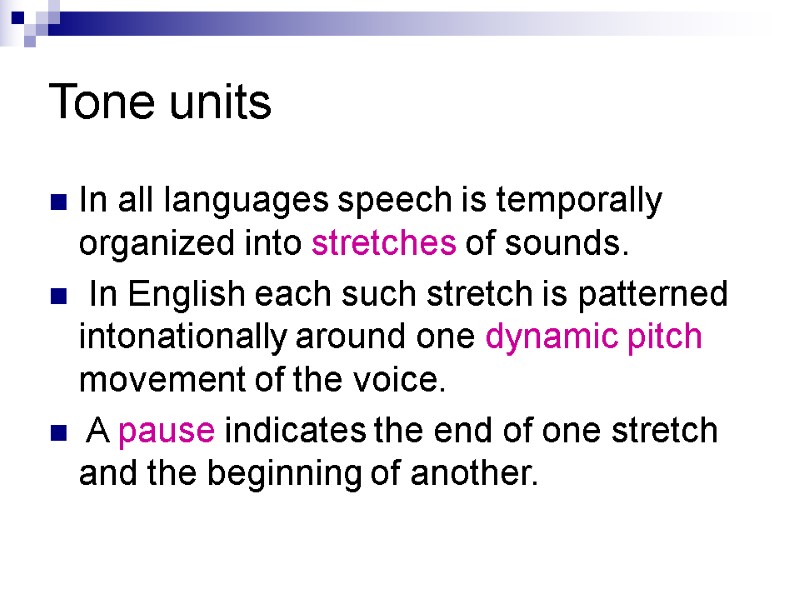
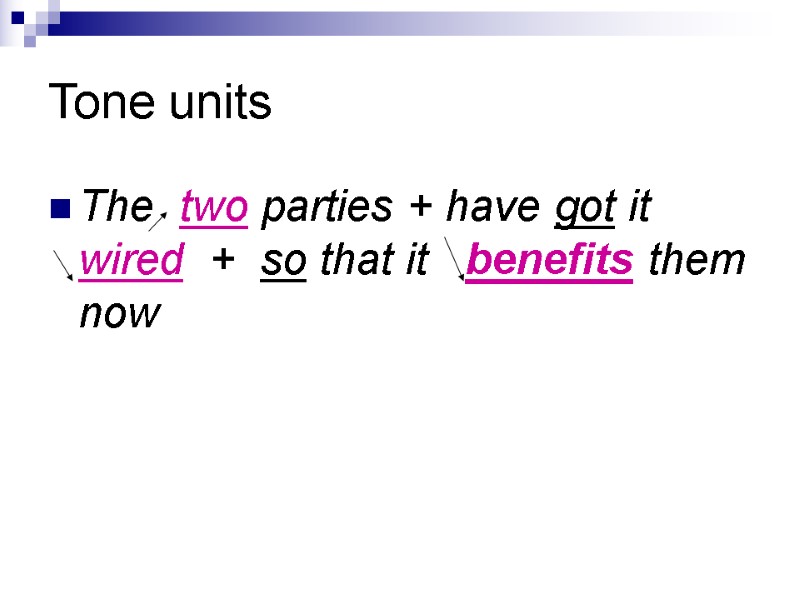
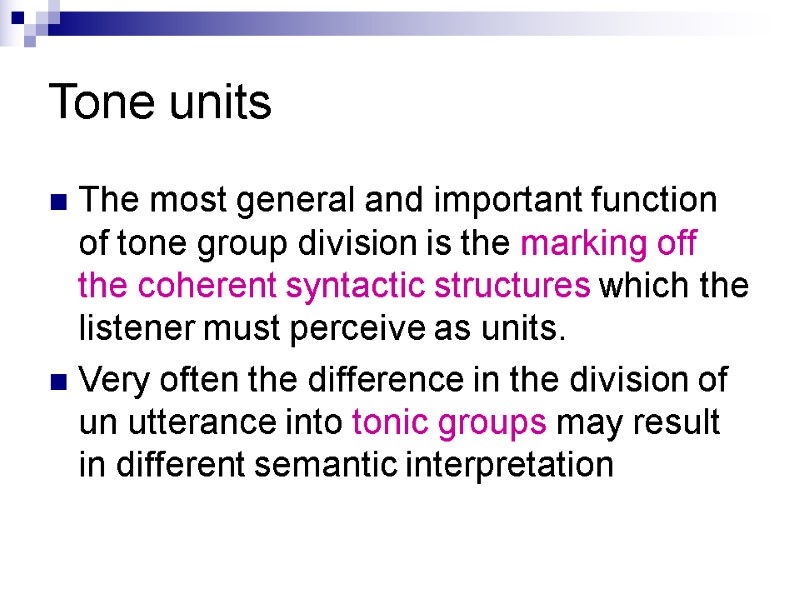
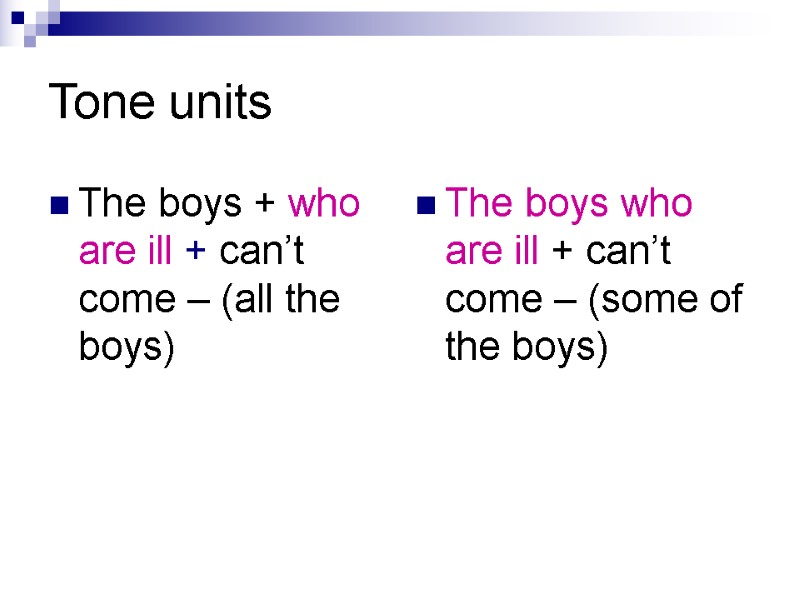
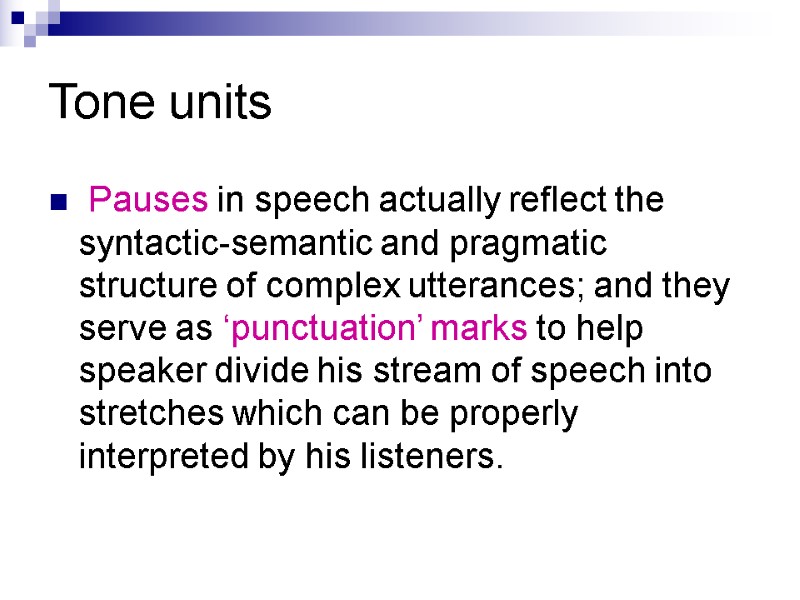
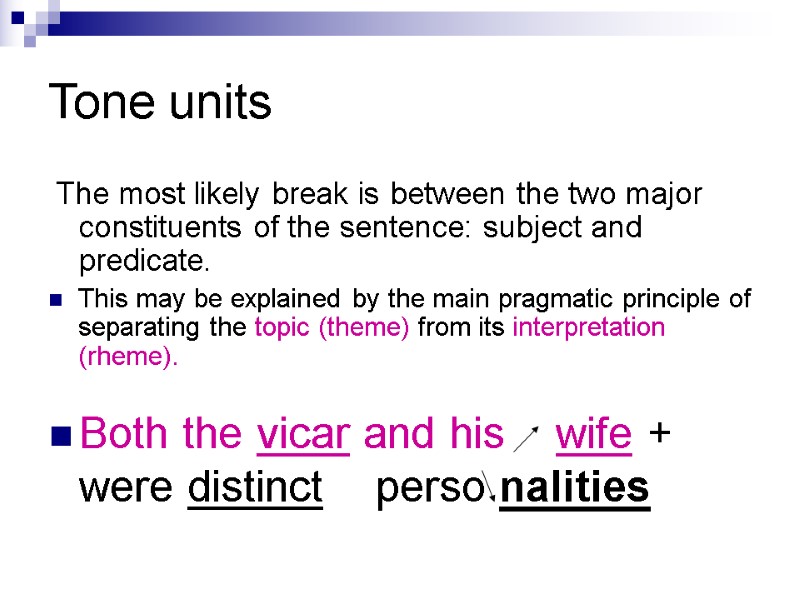
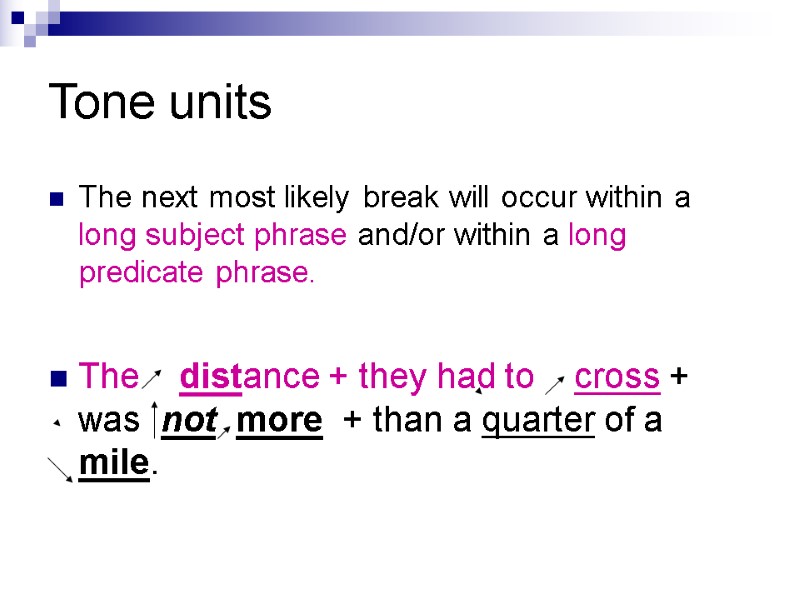
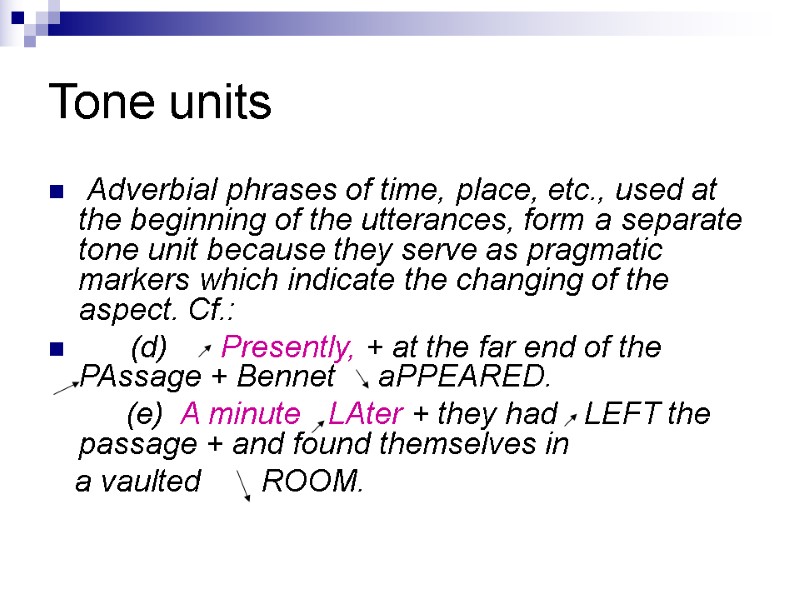
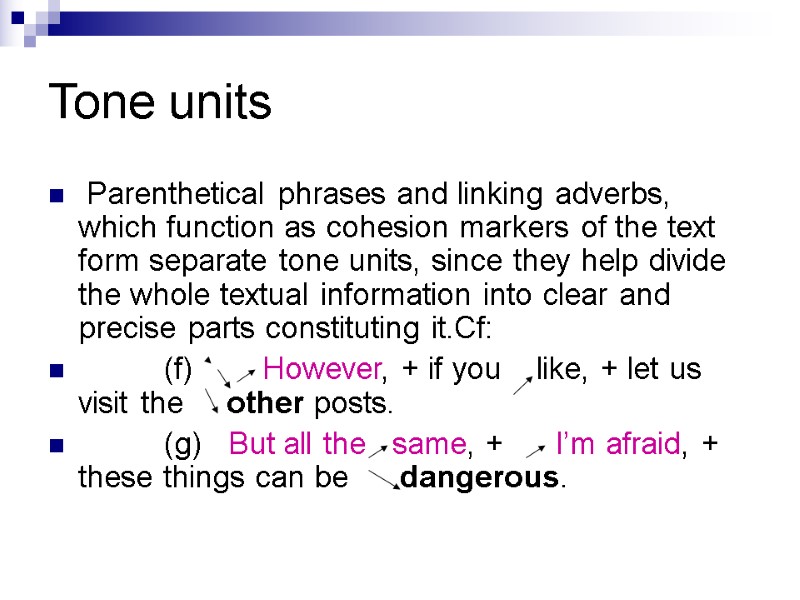
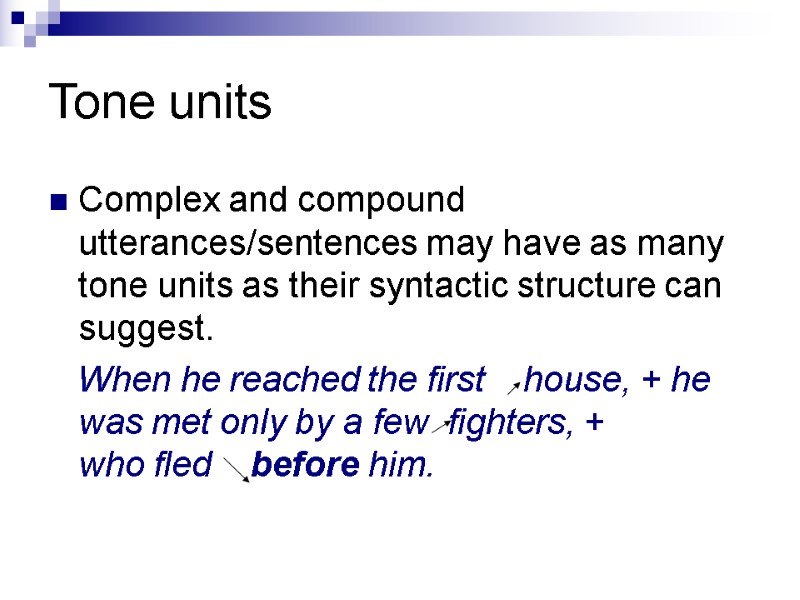
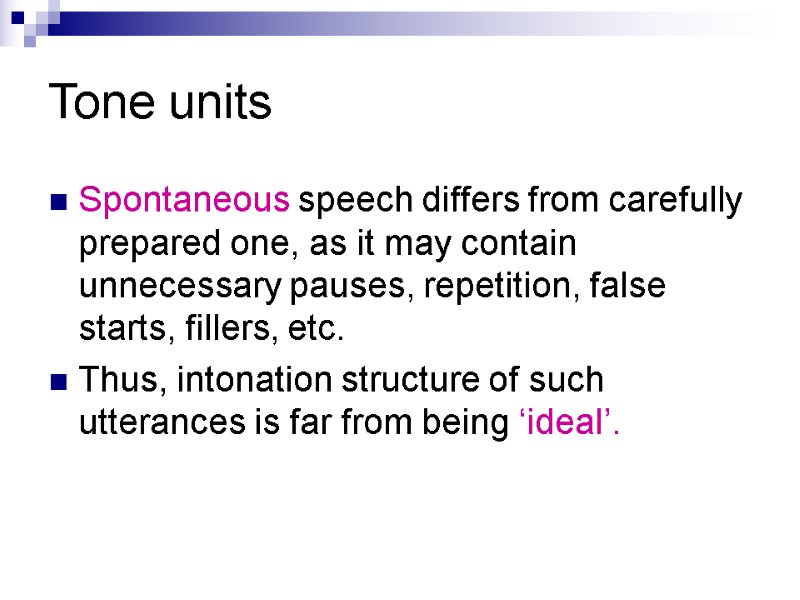
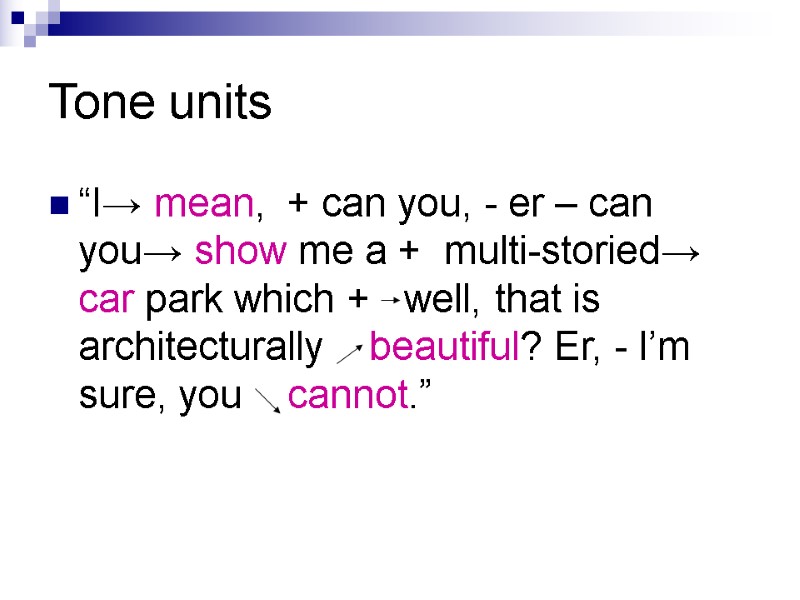
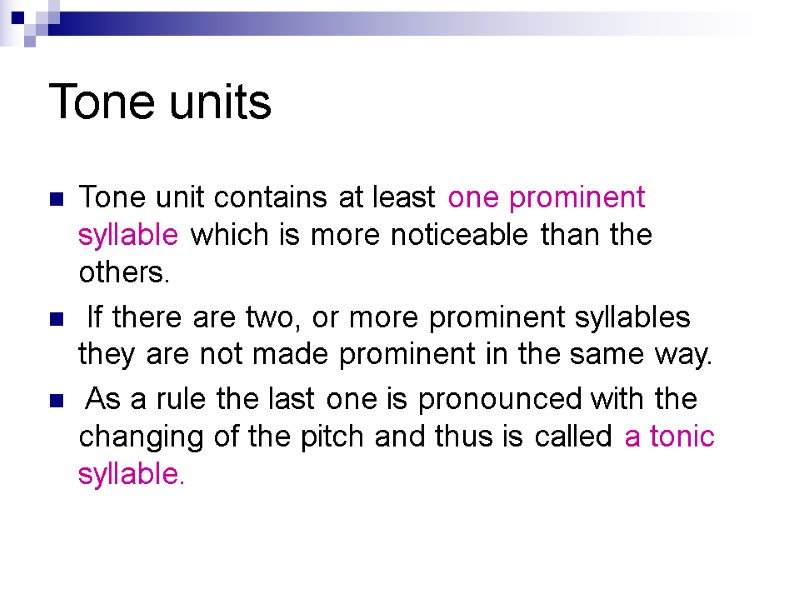
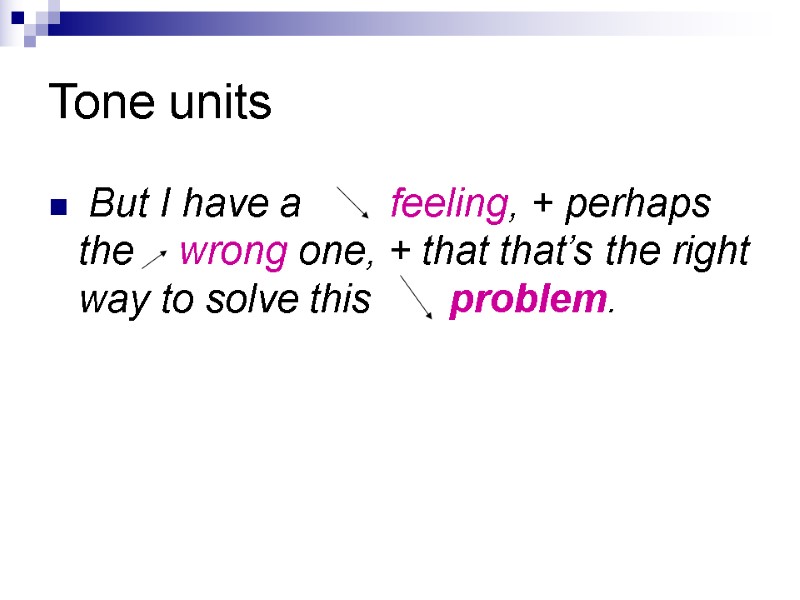
15898-tone_units.ppt
- Количество слайдов: 15
 Tone units The word ‘pragmatics’ applied to intonation, is used work to denote contextual interrelations between stretches of utterances as signalled out by the speaker. The main aim of the speaker is to get over to the listeners his own message. And he uses all possible clues in intonation system of a given language to make the listeners interpret his ideas and perceive the information.
Tone units The word ‘pragmatics’ applied to intonation, is used work to denote contextual interrelations between stretches of utterances as signalled out by the speaker. The main aim of the speaker is to get over to the listeners his own message. And he uses all possible clues in intonation system of a given language to make the listeners interpret his ideas and perceive the information.
 Tone units In all languages speech is temporally organized into stretches of sounds. In English each such stretch is patterned intonationally around one dynamic pitch movement of the voice. A pause indicates the end of one stretch and the beginning of another.
Tone units In all languages speech is temporally organized into stretches of sounds. In English each such stretch is patterned intonationally around one dynamic pitch movement of the voice. A pause indicates the end of one stretch and the beginning of another.
 Tone units The two parties + have got it wired + so that it benefits them now
Tone units The two parties + have got it wired + so that it benefits them now
 Tone units The most general and important function of tone group division is the marking off the coherent syntactic structures which the listener must perceive as units. Very often the difference in the division of un utterance into tonic groups may result in different semantic interpretation
Tone units The most general and important function of tone group division is the marking off the coherent syntactic structures which the listener must perceive as units. Very often the difference in the division of un utterance into tonic groups may result in different semantic interpretation
 Tone units The boys + who are ill + can’t come – (all the boys) The boys who are ill + can’t come – (some of the boys)
Tone units The boys + who are ill + can’t come – (all the boys) The boys who are ill + can’t come – (some of the boys)
 Tone units Pauses in speech actually reflect the syntactic-semantic and pragmatic structure of complex utterances; and they serve as ‘punctuation’ marks to help speaker divide his stream of speech into stretches which can be properly interpreted by his listeners.
Tone units Pauses in speech actually reflect the syntactic-semantic and pragmatic structure of complex utterances; and they serve as ‘punctuation’ marks to help speaker divide his stream of speech into stretches which can be properly interpreted by his listeners.
 Tone units The most likely break is between the two major constituents of the sentence: subject and predicate. This may be explained by the main pragmatic principle of separating the topic (theme) from its interpretation (rheme). Both the vicar and his wife + were distinct perso nalities
Tone units The most likely break is between the two major constituents of the sentence: subject and predicate. This may be explained by the main pragmatic principle of separating the topic (theme) from its interpretation (rheme). Both the vicar and his wife + were distinct perso nalities
 Tone units The next most likely break will occur within a long subject phrase and/or within a long predicate phrase. The distance + they had to cross + was not more + than a quarter of a mile.
Tone units The next most likely break will occur within a long subject phrase and/or within a long predicate phrase. The distance + they had to cross + was not more + than a quarter of a mile.
 Tone units Adverbial phrases of time, place, etc., used at the beginning of the utterances, form a separate tone unit because they serve as pragmatic markers which indicate the changing of the aspect. Cf.: (d) Presently, + at the far end of the PAssage + Bennet aPPEARED. (e) A minute LAter + they had LEFT the passage + and found themselves in a vaulted ROOM.
Tone units Adverbial phrases of time, place, etc., used at the beginning of the utterances, form a separate tone unit because they serve as pragmatic markers which indicate the changing of the aspect. Cf.: (d) Presently, + at the far end of the PAssage + Bennet aPPEARED. (e) A minute LAter + they had LEFT the passage + and found themselves in a vaulted ROOM.
 Tone units Parenthetical phrases and linking adverbs, which function as cohesion markers of the text form separate tone units, since they help divide the whole textual information into clear and precise parts constituting it.Cf: (f) However, + if you like, + let us visit the other posts. (g) But all the same, + I’m afraid, + these things can be dangerous.
Tone units Parenthetical phrases and linking adverbs, which function as cohesion markers of the text form separate tone units, since they help divide the whole textual information into clear and precise parts constituting it.Cf: (f) However, + if you like, + let us visit the other posts. (g) But all the same, + I’m afraid, + these things can be dangerous.
 Tone units Complex and compound utterances/sentences may have as many tone units as their syntactic structure can suggest. When he reached the first house, + he was met only by a few fighters, + who fled before him.
Tone units Complex and compound utterances/sentences may have as many tone units as their syntactic structure can suggest. When he reached the first house, + he was met only by a few fighters, + who fled before him.
 Tone units Spontaneous speech differs from carefully prepared one, as it may contain unnecessary pauses, repetition, false starts, fillers, etc. Thus, intonation structure of such utterances is far from being ‘ideal’.
Tone units Spontaneous speech differs from carefully prepared one, as it may contain unnecessary pauses, repetition, false starts, fillers, etc. Thus, intonation structure of such utterances is far from being ‘ideal’.
 Tone units “I→ mean, + can you, - er – can you→ show me a + multi-storied→ car park which + well, that is architecturally beautiful? Er, - I’m sure, you cannot.”
Tone units “I→ mean, + can you, - er – can you→ show me a + multi-storied→ car park which + well, that is architecturally beautiful? Er, - I’m sure, you cannot.”
 Tone units Tone unit contains at least one prominent syllable which is more noticeable than the others. If there are two, or more prominent syllables they are not made prominent in the same way. As a rule the last one is pronounced with the changing of the pitch and thus is called a tonic syllable.
Tone units Tone unit contains at least one prominent syllable which is more noticeable than the others. If there are two, or more prominent syllables they are not made prominent in the same way. As a rule the last one is pronounced with the changing of the pitch and thus is called a tonic syllable.
 Tone units But I have a feeling, + perhaps the wrong one, + that that’s the right way to solve this problem.
Tone units But I have a feeling, + perhaps the wrong one, + that that’s the right way to solve this problem.

